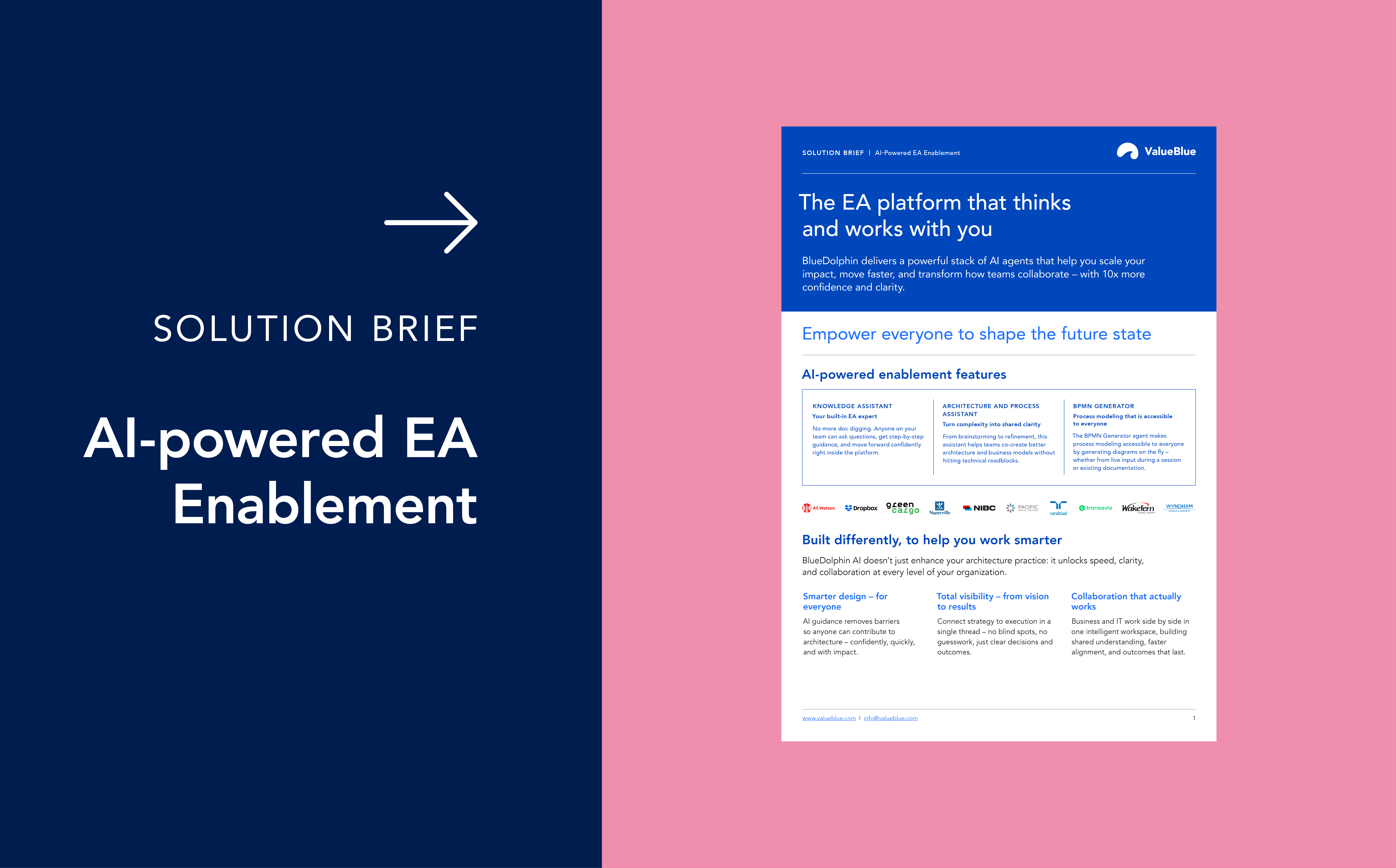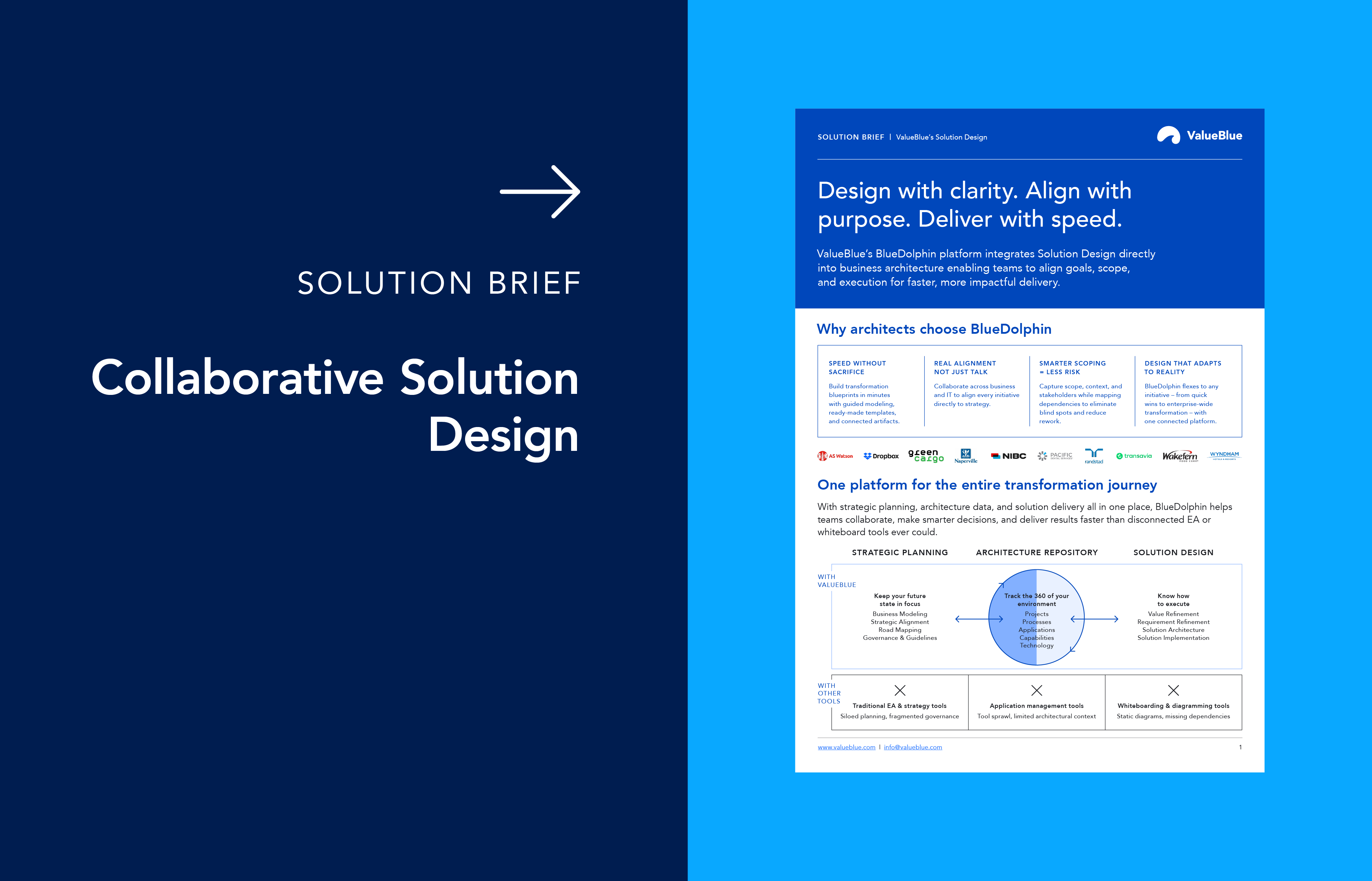Operationalizing Project Portfolio change at a speed we’ve never seen before
In this age of Digital Transformation and accelerating technological innovation, businesses need to be able to adopt change at a speed they’ve never faced before. For most organizations, it’s already hard enough to keep customers satisfied and the business running, but how do you keep on innovating while the fundamentals of the organization are constantly changing? How do we keep the organization on track to reach our business goals while we simultaneously run numerous projects which all heavily influence each other?
Project & Portfolio Architecture: Bridging strategy and operationalization
Project & Portfolio Architecture (PPA) is the bridge between your strategy and operationalization. A Project Portfolio Manager that manages a portfolio of projects runs into multiple challenges: How do you know what decisions to make to most effectively execute the organizational strategy? And how do you stay in control of running daily business? How to connect change to your day-to-day operations, without the risk of losing business continuity?
Project & Portfolio Architecture offers compelling answers to these questions. Organizations are increasingly aware that collaboration between departments and business units needs to be improved in order to break down silos and work on projects from a holistic perspective. Projects often influence each other and depend upon deliverables and resources of other projects. Therefore, it’s important to get a good understanding of the exact dependencies to know how to prioritize and order these projects to maximize Return On Investment (ROI). PPA ensures that the organization can effectively improve project prioritization, based on key metrics and decision ready dashboards.
Project & Portfolio Architecture is all about doing the right projects at the right time to help the organization to achieve her business goals. PPA keeps track of an organizational strategy to improve its core capabilities supporting their value chains, and the implementation of this strategy via its projects.
Return On Investment
One of the key words in PPA is Return On Investment (ROI). With PPA, organizations can estimate the potential return on investment of a project based on various metrics that can be analyzed in relation to each other. This helps them to determine or adapt the strategy, to prioritize projects and to make informed decisions on which projects can start or continue or which projects aren’t viable and will have to stop or pause.
Critical decisions
Next to the strategic benefits to make the right decisions on which projects need to start (or end), combining PPA with Project Management is an effective way to improve communication over the different layers in an organization, and between (project/agile) teams within an organization. Having a clear insight in the portfolio of projects and their impact on the business as well as the ROI functions as leverage for getting buy-in on projects, helps to create transparency throughout the organization. Stakeholders will base their decisions on the same informational insights, are enabled to see the bigger picture and are guided to drill down to detailed implementation information when required. This way, strategy and operationalization can constantly be monitored for projects, designs and their dependencies.
Project & Portfolio Architecture vs Project Management
In short, PPA is about doing the right projects, while Project Management (PM) is about doing projects right. Project and Portfolio Management are similar in a way that they require the same general skills to be executed successfully. However, despite their similar names both PM and PPA are quite different. Project Management is more operational then PPA but provides detailed metric information for PPA to keep control over the portfolio and to make informed decisions. Project Management reports on the status of resources, dependencies, impediments, risks and finance.
The stages of projects
At ValueBlue we believe that PPA and Project Management are inseparable for organizations that want to stay focused on achieving their business goals. To reap the benefits of this combination, organizations need to use a workflow that guides them through multiple stages out of which a project exists:
-
Ideation stage
Describes the idea behind a project and how it supports the defined business goals. This is used to define if the project is going to be accepted for the design phase. -
Design stage
Design the current and future state processes, applications, data and infrastructure according to the given architecture guidelines and principles, and their effects on the full architecture. -
Build stage
Once the designs are accepted, the solutions can be implemented. Progress is constantly monitored in project management tool. -
Implementation stage
Implement the solution into the organization, so that the designed future state becomes the new current state.
During these four stages there should be constant monitoring via a Project & Portfolio Dashboard. This dashboard should contain all relevant information, such as the KPI’s, dependencies and the underlying projects and their designs. Project Management and PPA should therefore be offered and practiced jointly, in an integrated solution.
Projects are often connected by planning, resources, money and the overlap in building a solution for the same business capability. Managing all projects, prioritizing them jointly (‘doing the right projects at the right time’) via decision ready dashboards, constitutes the basics of PPA. A strong PPA capability delivers the proper tools to make the right decisions for your organization and to keep you focused on the business goals that you want to achieve and how you want to achieve them.
Our vision on Project & Portfolio Architecture
At ValueBlue we are a firm advocate of PPA and connect it to the Business Capabilities, which enable the use of Capability Based Planning. Projects are connected to the Business Capabilities that are used in the value chain, in order to provide true customer value. By connecting projects to the Business Capabilities, Capability Based Planning can be used as an extra steering mechanism to prioritize the project portfolio.
When it comes to building a successful PPA capability, clear and active communication is key. In short, PPA contains the following steps:
-
Create an inventory of all running and upcoming projects.
-
Analyze all of the projects in the PPA inventory to see how well they fit with the defined strategy and the business goals by using the key metrics for resourcing, budget, dependencies, timeline and strategic fit.
-
Perform dependencies and resource alignment across all projects.
-
Manage the portfolio: Make decisions and re-prioritize all your projects. Act by reallocation of budgets, resources and also reprioritize the whole allocation paradigm.
-
Test all actions in the steps above and to adapt where needed to constantly improve the PPA process cycle.
Proper PPA & Project Management are key capabilities to master in any organization that needs to innovate fast in order to stay relevant. BlueDolphin offers an off-the-shelf solution that directly connects your portfolio of projects to the Enterprise Architecture you’re maintaining in BlueDolphin. Integrating Enterprise Architecture and PPA in BlueDolphin allows you to be in control of running the business while guiding business innovating towards the age of agile transformation.
BlueDolphin is an integrated solution that seamlessly connects PPA to your organization’s business goals and capabilities, the current state architecture and allows for recycling of information created in your project designs. This will not only help to give much more context and value to your project portfolio but introducing PPA to your architecture also plays a crucial role in maintaining your architecture repository, by recycling all current and future state information created in project designs.
Want to know more about BlueDolphin’s Project & Portfolio Architecture solution? Contact us today!






